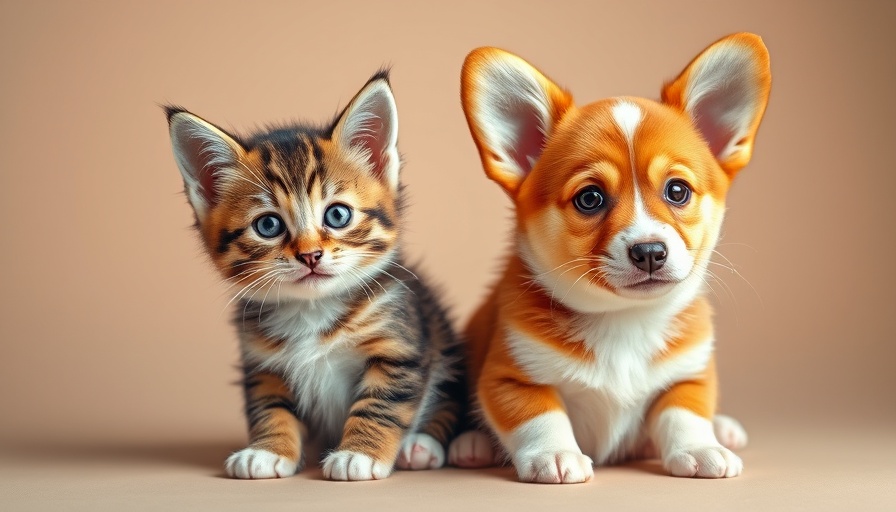
Understanding the Power of Color Therapy for Pets
Do you ever wonder what colors might be doing for your furry friends? Welcome to the intriguing world of color therapy, a fascinating practice that's become increasingly recognized in the field of animal care. Color therapy, also called chromotherapy, suggests that each color carries its own vibrational energy that can influence the emotional and physical wellbeing of pets. Similar to how plants flourish with varying light spectrums, our beloved dogs and cats may benefit from colors in their environment too.
The Science of Colors and Emotion
Scientific studies observe that colors can evoke emotions. For instance, blue is commonly associated with tranquility, red can stimulate energy, while green is viewed as a color of balance. Understanding these associations can empower pet owners to curate environments that enhance their pets' mood and vitality.
How Do Pets Respond to Colors?
It's important to note that pets, particularly dogs and cats, perceive colors differently than humans do. Their vision is limited — for example, dogs are believed to have dichromatic vision, meaning they can primarily see certain shades, lacking the spectrum that humans enjoy. Despite this, animals are incredibly sensitive to their surroundings. Researchers note that pets are often drawn to colors that resonate with their instinctual needs, helping them to relax or invigorate them.
Incorporating Color Therapy at Home
So, how can you make use of these insights? Here are a few practical tips to weave color therapy into your home life:
- Colored Bedding and Toys: Choose toys and bedding in calming shades like blue or soothing pink to create a restful corner for your pet.
- Lighting Adjustments: Use colored light bulbs or filters in areas where your pet spends time. Soft blue or green light can foster calmness.
- Solarized Water: Expose your pet’s drinking water to sunlight to induce gentle energetic shifts and enhance hydration. This simple act can significantly benefit their health.
Color Therapy as a Complement to Veterinary Care
While color therapy is a positive approach, it’s crucial to emphasize that it should never replace traditional veterinary care. Instead, consider it a supportive technique that works in conjunction with your pet's wellness routine. Many guardians explore color therapy as they become more engaged in holistic care practices for their pets.
A Heartwarming Conclusion
As pet owners, it's our duty to create nurturing environments filled with love and health. Whether you're considering a vibrant set of toys or reinventing your pet's sleeping area, harnessing the vibrational energy of colors might just transform their emotional landscape. Experimenting with color therapy can be a joyous journey—one that connects you and your beloved companion through an exciting and heartfelt paradigm.
So next time you stop to pick a new toy or blanket, think about the impact of color. Together with your understanding of your pet’s unique personality and preferences, you can create their perfect oasis, aiding in their emotional and physical health for a happier and healthier life.
 Add Row
Add Row  Add
Add 




Write A Comment